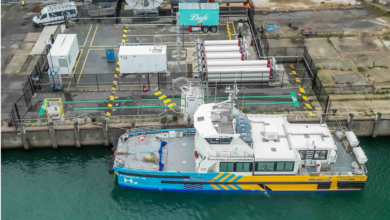Alaska Air and ZeroAvia to develop hydrogen powertrain
Developing advanced novel propulsion is one of the five parts of Alaska’s strategy to achieve net-zero.

ZeroAvia to collaborate with Alaska Air Group (the parent company of Alaska Airlines) for developing a hydrogen-electric powertrain capable of flying 76-seat regional aircraft over 500 NM.
Alaska and ZeroAvia engineers will jointly work to scale the company’s existing powertrain platform to produce the ZA2000, an engine family capable of producing between 2,000 and 5,000 kW of power with a 500-mile range.
The partnership will initially deploy ZeroAvia’s 3MW+ hydrogen-electric powertrain system technology into a full-size De Havilland DHC-8-400 (Q400) aircraft, previously operated by Alaska Air Group subsidiary Horizon Air Industries, Inc., capable of transporting 76 passengers.
ZeroAvia will also work closely with aircraft regulators to ensure the aircraft meets safety and operational requirements and set up a location in the Seattle area to support this initiative.
Alaska has also secured options for up to 50 kits to convert its regional aircraft to hydrogen-electric power through ZeroAvia’s zero-emission powertrain, starting with the Q400 aircraft. This pioneering zero-emission aviation rollout will be supported by the ground fuel production and dispensing infrastructure from ZeroAvia and its infrastructure partners, such as Shell.
Alaska is also joining the list of investors for ZeroAvia, alongside Amazon Climate Pledge Fund and Bill Gates’s Breakthrough Energy Ventures.
Diana Birkett Rakow, VP sustainability for Alaska Airlines, said, “Alaska is committed to creating a sustainable future for aviation, working on all aspects of a five-part path toward our goal of net zero by 2040.”
Val Miftakhov, CEO and founder of ZeroAvia, said, “The aviation industry is one of the hardest industries to decarbonize; however, with this collaboration, we are one step closer to achieving our goal of making our skies emission-free.”
